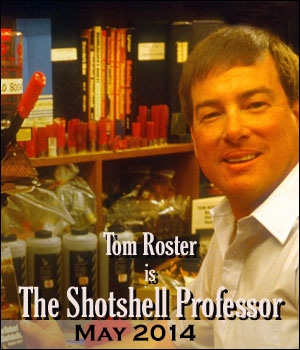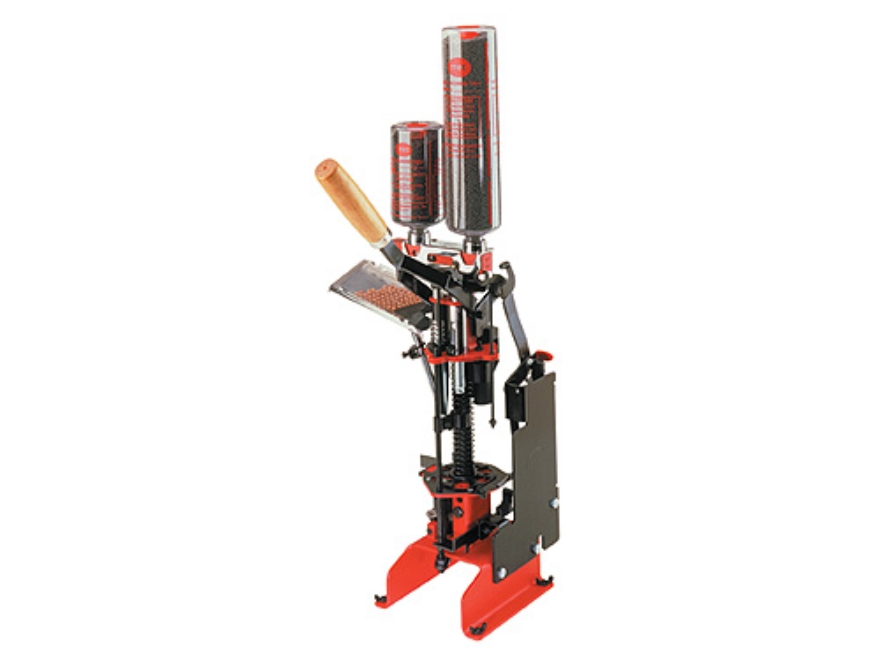Consider Reloading for Truly Customized Shotshell Loads

I don’t think anyone could say that U.S. shotgunners suffer these days from a lack of factory shotshell loads. There are now no less than six major shotshell ammunition plants in the U.S. plus a specialty one. As recently as ten years ago there were only three, with no specialty load manufacturers. Additionally, there is at least one company involved full-time in importing and shipping direct to U.S. shooters an Italian-made line of shotshell ammunition. Lastly, there are currently at least three or four shooter groups – mainly in Texas – importing container loads of still more lines of Italian and Spanish-made shotshell ammunition which they then sell direct.
With all of the factory loads now available – both lead and nontoxic, target and hunting – one would not think U.S. shotgunners have to look very far to find the exact load in the exact shot size they want. However, such is definitely not yet the case. Most of the many shotshell manufacturers, within or having their products imported into the U.S., are giving us basically the same loads – lead and nontoxic – just served up in different looking boxes with slightly different (and therefore ballistically irrelevant) velocity levels with the same old shot sizes in the same old shot charge weights. The competition among them, therefore, is not about load variety. Rather, it is about convenience of load availability and price-point; principally price-point.
This leaves U.S. shotgunners basically in the same boat as 20 years ago. There are certainly a number of loads available from manufacturer to manufacturer – target and hunting – but they are basically copycats of one another. Additionally the loads are what the manufacturers think are cool, not necessarily what shooters want.
For example, in today’s highly competitive nontoxic shotshell load market the current idea strongly held by most shotshell manufacturers worldwide is that shotgunners want screaming-meemee velocities in their steel loads, as in 1,500 to 1,700 feet per second. Pattern quality, which is significantly affected and eroded by both low shot charge weights and high velocities, does not seem to be an important consideration whatsoever. Additionally, as manufacturers push ultra-high velocities they blissfully overlook recoil levels caused by same — even though the predominant age of the individuals participating – target or hunting – is well over 45. So what? The so-what is that as shooters age they become increasingly more sensitive to recoil, and so high-velocity levels are the last thing they want in ammunition that is kicking the hell out of them.

So here’s my advice. Strongly consider reloading. Reloading is simple and is fun. With today’s shotshell reloading tools, reloading can consistently produce shotshell ammunition every bit as good as factory ammunition. And what is more, by reloading you can assemble exactly the shot-charge weight you want in your preferred gauge with exactly the shot size you want at pretty much the exact velocity level you desire. Gone will be the days when despite all the factory loads out there you still can’t find the specific load you want in the shot size you want when you need it. With reloading you get to produce a high-quality load that meets your needs when you need it.
Note I did not say anything about saving money. That is the old, traditional reason for reloading. And that is why for decades it was essentially clay target shooters who reloaded because reloading offered them the most cost savings relative to their high-volume ammunition needs. But while reloading will still save you money over factory ammunition – and this is especially so if you reload for the 28 gauge or .410 bore – it is no longer the predominant reason for reloading. The predominant reason today is to give you exactly the load YOU want for YOUR needs. And it helps you break the bonds of dependency on some dealer who finally gets in stock the loads you are after or to finally have some importer ship you the loads when the container ship finally reaches the U.S.
With shotshell reloading today there has never been a larger variety of high-quality, clean-burning propellants available. And the same thing can be said of primers. As to shotshell wads there are an incredible number of one-piece plastic wads that let you more than double the variety of loads you can assemble as in years past. This is true of all the gauges 12 through 28. Only 10 gauge and .410 still suffer a bit from a scarcity of wads. As for shot, besides lead shot of various hardness levels, today you can reload bismuth, steel and several types of tungsten composite pellets. There are also a wider variety of shotshell hulls to reload today than ever before. And all of this variety can come to you via the convenience of mail-order. The two largest such firms are Ballistic Products in Minnesota at www.ballisticproducts.com or Precision Reloading in South Dakota, www.precisionreloading.com. Both sell every conceivable reloading press and accessory tool.
With clay-target season upon us there’s no better time to get into shotshell reloading. So, if you’re considering shotshell reloading, by all means do so. But once you do, like me you are very likely to acquire a lifelong addiction. Get ready for a fascinating hobby and a great deal of fun.
Copyright 2014 by Tom Roster. All Rights Reserved. This material may not be published, broadcast, rewritten or redistributed.
Tom Roster is an independent ballistics consultant and author specializing in the design and testing of shotshell loads for U.S. shotshell and reloading components manufacturers. He is a court-recognized shotshell/shotgun expert witness. Tom was formerly the Ballistics Research Director at Oregon Institute of Technology and then served as a Ballistics Specialist for the Dept. of the Interior. In these capacities he designed and administered the world’s six most extensive lead versus nontoxic shot duck, goose, pheasant and dove shooting tests ever conducted. He then co-authored their peer-reviewed scientific reports. Roster spends about 100 days afield each year testing lead and nontoxic hunting and target shotshell loads, then traveling worldwide reporting on his findings to industry and wildlife professionals, hunters and shooters, and in his writings for various shotgunning magazines. Contact him in Oregon at (541) 884-2974,tomroster@charter.net.

Tom Roster is an independent ballistics consultant and author specializing in the design and testing of shotshell loads for U.S. shotshell and reloading components manufacturers. He is a court-recognized shotshell/shotgun expert witness. Tom was formerly the Ballistics Research Director at Oregon Institute of Technology and then served as a Ballistics Specialist for the Dept. of the Interior. In these capacities he designed and administered the world’s six most extensive lead versus nontoxic shot duck, goose, pheasant and dove shooting tests ever conducted. He then co-authored their peer-reviewed scientific reports. Roster spends about 100 days afield each year testing lead and nontoxic hunting and target shotshell loads, then traveling worldwide reporting on his findings to industry and wildlife professionals, hunters and shooters, and in his writings for various shotgunning magazines. Contact him in Oregon at (541) 884-2974, tomroster@charter.net.


Comments